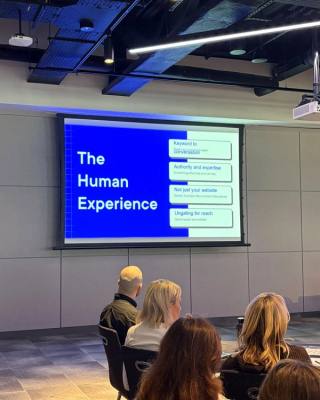Good design is accessible, and accessible design is good. As firms scramble to become compliant with the upcoming European Accessibility Act (EAA), many seem to have forgotten this basic fact. Accessibility is not only a box ticking exercise, but a crucial element to any commercially successful project. Accessibility, put simply, makes your product available to a wider market, and makes it easier for all your existing users to access and use your product. This is especially true when it comes to web design. When a website is your go-to way of selling to customers, a failure to accommodate every visitor translates into less traffic, less engagement, and less leads.
Accessibility for everybody
You’re trying to watch a video on the bus, read a blog outdoors on a sunny day, or text your friend whilst holding a bag of groceries. These are universal experiences, and usually awkward and unpleasant ones. They’re also all situations where accessible design can help any user. Closed captions, high contrast design, and fast loading times provide crucial assistance to disabled users, but simultaneously make life a lot easier for situationally disabled users, and even those using a website in perfect conditions. A good analogy are curb ramps on a footpath, installed for wheelchair users, but appreciated by anybody cycling a bike, pushing a buggy or dragging a suitcase. If accessible design makes a service easier to use for everyone, then it is, by definition, good design.
The hidden overlap
At Kooba, we understand that accessibility features overlap with the elements of a commercially successful design. Rather than experiencing a trade-off between inclusive designs and high-performing websites, we find that the two exist seamlessly together. In other words, we can have our cake and eat it too. Why is this? The devil is in the details. Take fast loading times for instance. A website that loads quickly is more enjoyable to use, easier to access with a poor internet connection, and stands higher on SEO rankings. Of course, these elements reinforce one another, as a more pleasant experience for a wider audience brings in more engagement and leads, and helps to develop a more lucrative brand.
The bottom line
It may not be the job of a marketing team to build an accessible user experience for their audience, but it is certainly in their best interest to do so. At Kooba, we design websites based on the metrics that matter most to clients; traffic, leads and engagement. Accessible design does not detract from those goals, but rather plays a crucial role in accomplishing them. Whether marketers understand it or not, accessible features deliver them a wider audience and an improved UX, leading directly to increased revenue and happier customers. Importantly, accessibility is not an afterthought or an add-on, but an integral part of the design process. Taking accessibility seriously from the start will yield dividends for any company, and help avoid the costly work of retrofitting accessible features and content to an existing project.









